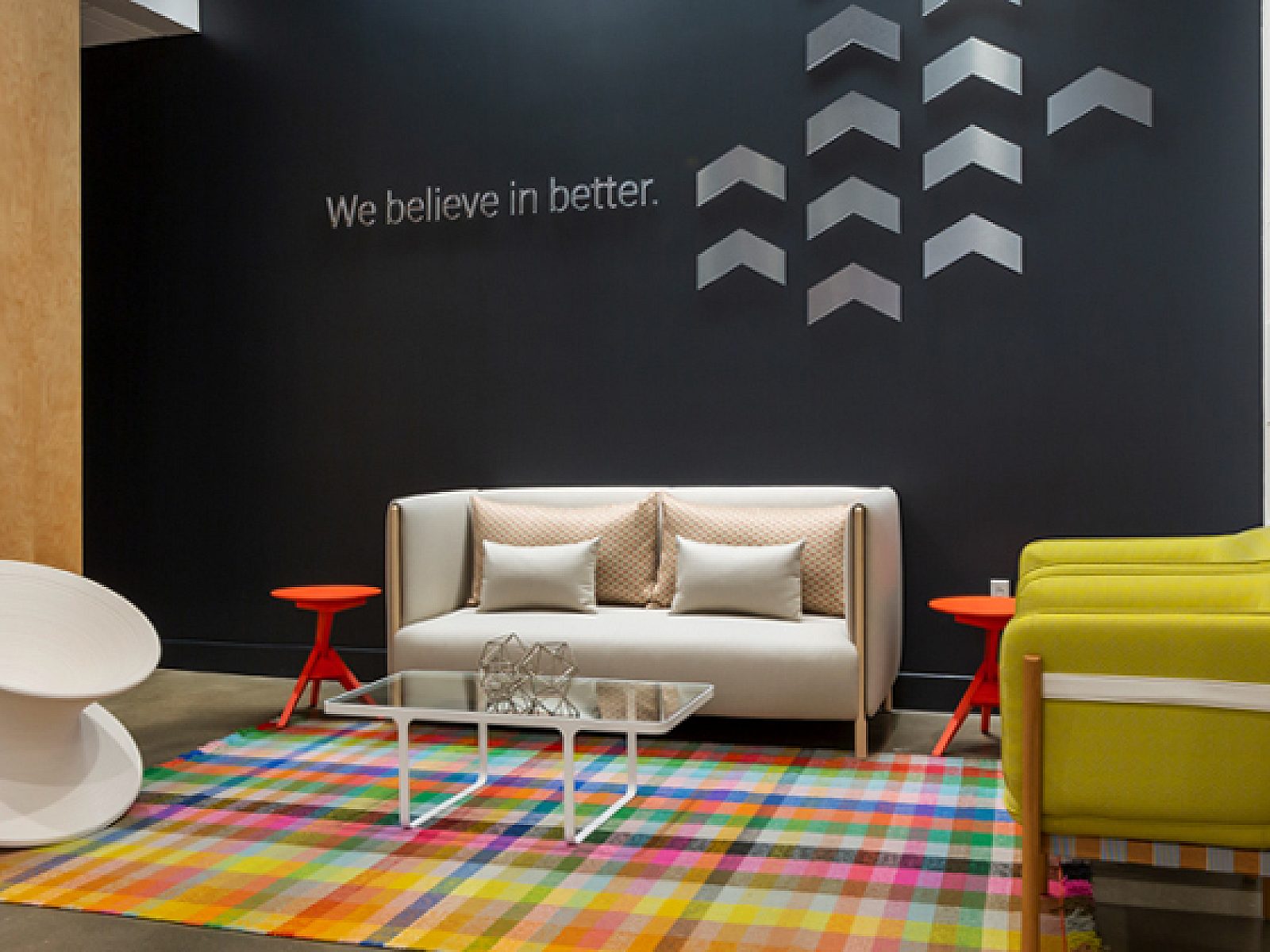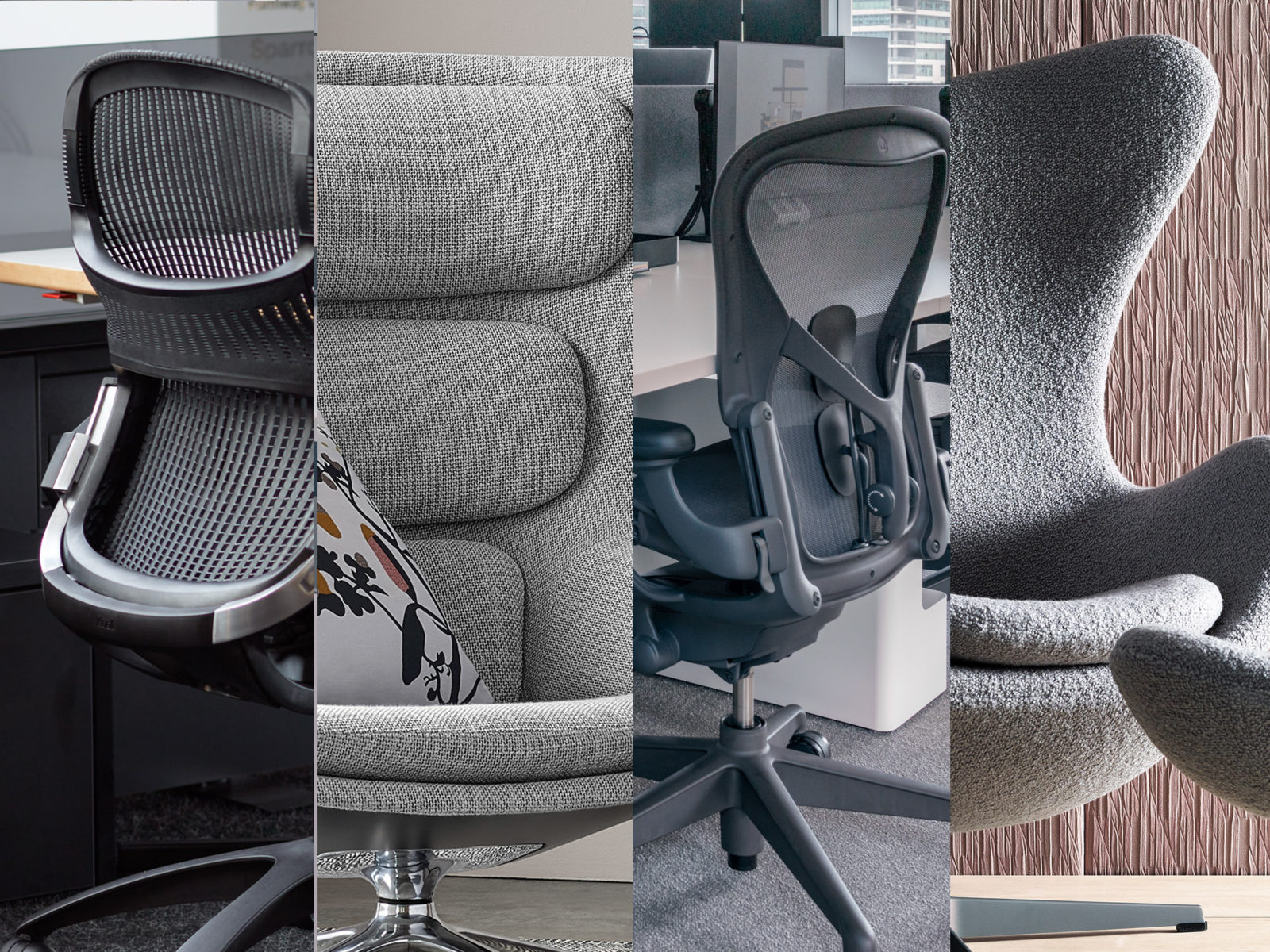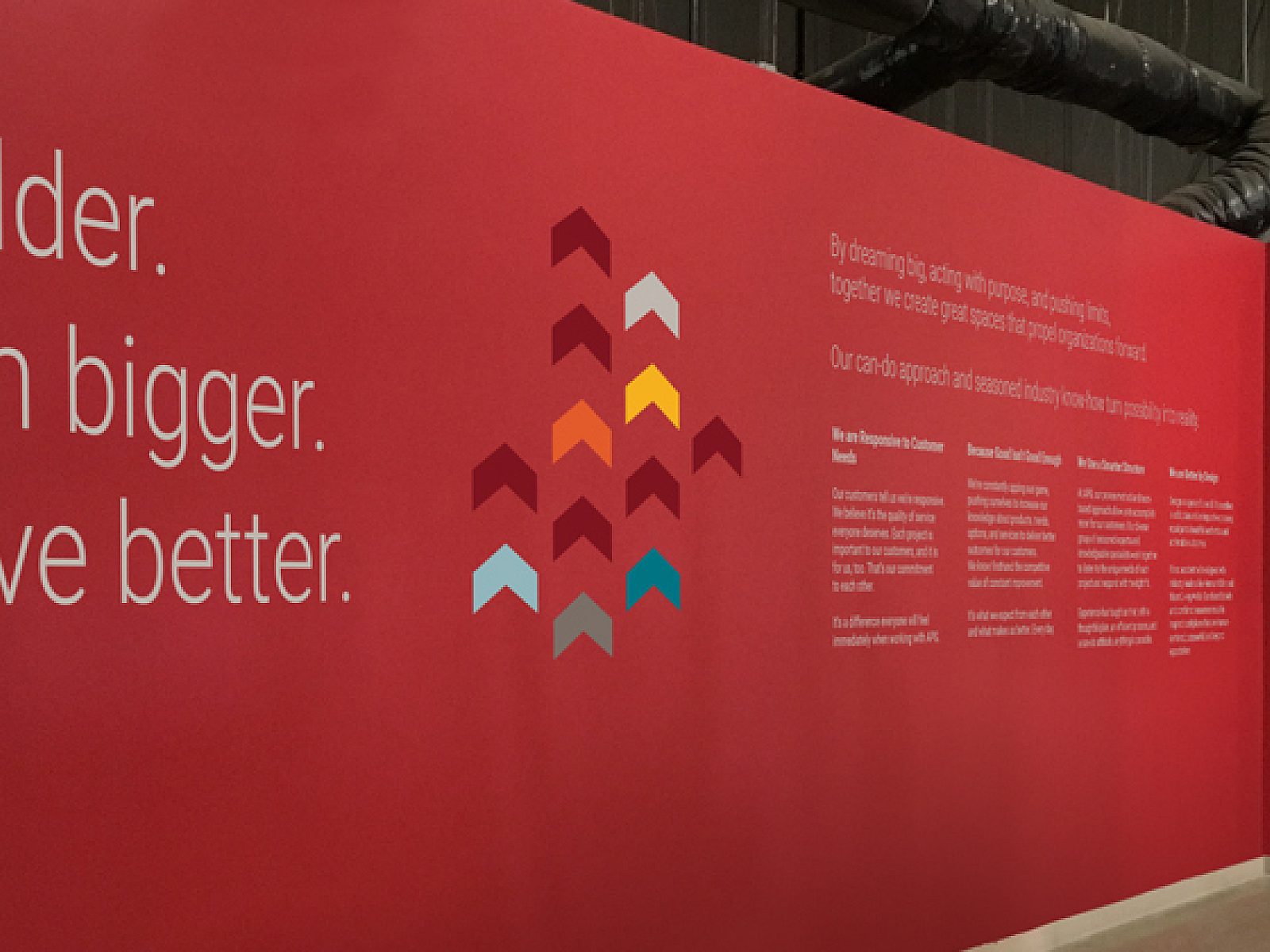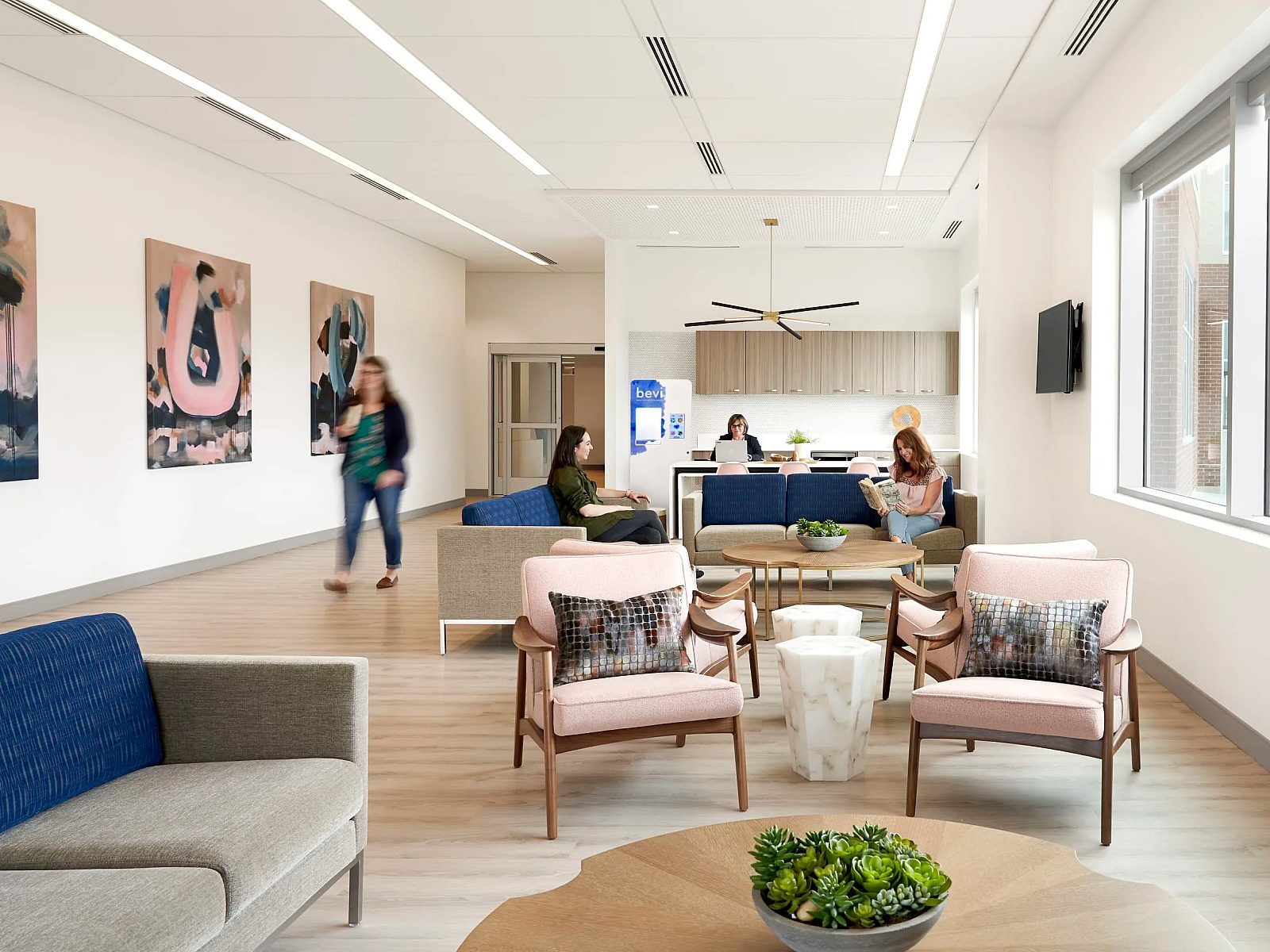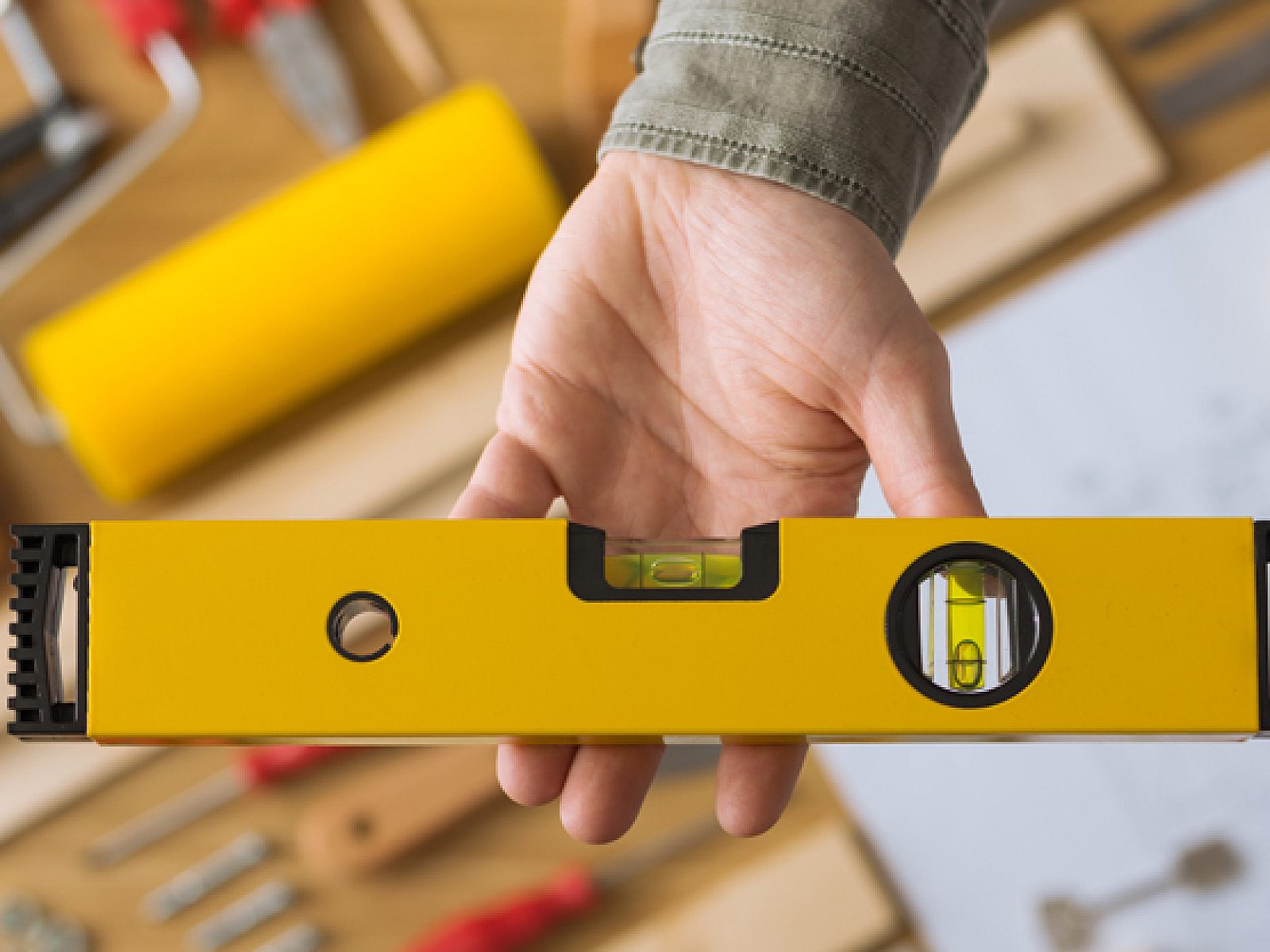Public Health Concerns & the Workplace: Interview with Elaina Jarvis
As we go through this transition into the New Normal, the workplace is at the forefront of the conversations surrounding these imminent changes. We sat down with Elaina Jarvis, APG's Director of Design, to discuss the ways in which this shift is affecting the design process.

How do you anticipate the pandemic to affect customer’s needs?
I expect that the pandemic will affect our clients in several ways. First and foremost, they are faced with the initial decision of when and how-to bring employees back to the office. Do the current floor plans allow for the proper physical distancing of employees at their workstations, in collaboration spaces, and in shared use utility areas like kitchens, cafés, etc.?
- If so, what needs to be illustrated and what training is needed for their team’s reentry into the office?
- If not, what options need to be considered within the floor plan? What furniture changes and/or additions can be made for a safe return to the office? Will work from home options be considered or discussed?
Real estate usage and footprint will be a big topic of discussion – do we need more space or less as we evaluate what works for our company and teams in this New Normal?
I also expect that clients will be evaluating the role that technology played in their ability to maintain workload effectively with everyone working remotely. IT needs, budgets, and tools will be a larger part of the discussion moving forward. How will we continue to leverage technology tools we have or identify and procure new tools we need as a larger part of our client engagement/experience? How much more will be done virtually versus face to face?
How are APG designers preparing to face this shift?
APG Designers have been working with clients over the past several weeks to address some of the concerns mentioned above. Each client is different – each floor plan, assigned vs. unassigned work points, size of current workstations, shared ancillary settings, corporate policies around cleaning/sanitizing initiatives, etc.
We are leveraging a knowledge-based approach in partnership with our clients to understand their needs and discuss potential solutions based upon their unique condition. We are sharing the strategies we are employing in our own Showrooms and Innovation Centers as a jumping-off point in our discussions, as we have always done – except now it is to solve for a different set of problems that we are all equally challenged with.
What kind of short-term and long-term effects do you anticipate the pandemic to have on the interior design and furnishings industry?
I anticipate this will have several short-term and long-term effects on our industry and the future planning of space. Short-term, we are addressing the immediate aftermath of how things have changed in the world in the past few months. There is still a feeling of this being surreal. The world we knew has evaporated, at least for the time being, until science catches up and treatments and/or a vaccine becomes available. This has and will continue to affect many aspects of our lives at work and at play. Some recovery will happen, but some things will never return.
As companies look to come back to the office (including APG), we are evaluating how we can do that, mitigate risk, and make our employees feel safe to return. For the past several years, there has been a shift in the floor plate – reducing workstation sizes to accommodate more shared work points, lowering panel heights to enhance collaboration, and redefining traffic flow to build opportunities for casual encounters. All these design strategies could see a change as companies seek more physical distancing.
Long term, companies will be looking at options regarding real estate utilization. Will they want more or less? It will depend on their corporate policies around space utilization, work from home, how technology factors into the work they do, etc.
They will also be investigating technology – current solutions and future. Office furnishings manufacturers have begun developing products to add to existing spaces to create boundaries and physical distancing. Every manufacturer is looking at their product offering to determine what items can be added, how existing portfolios of products may be impacted, what gaps exist to respond to future needs, etc.
This will also be the case for technology companies as they gauge how current solutions performed under the weight of everyone working remotely. What worked? What didn’t work as well? What gaps are there in the industry? In critical infrastructure?
I expect the furniture and technology industry to change significantly over the next few years in response to what we know, and as new information becomes available. I also expect more solutions to be developed specifically to address work from home, as we may see that become a bigger part of our New Normal than anticipated.


